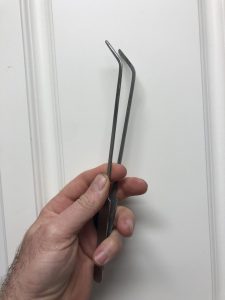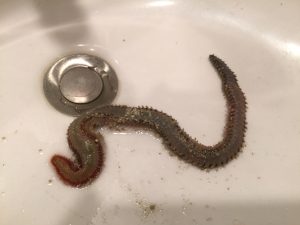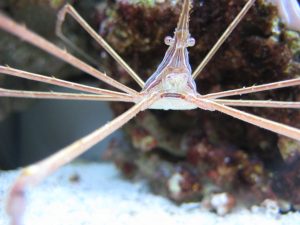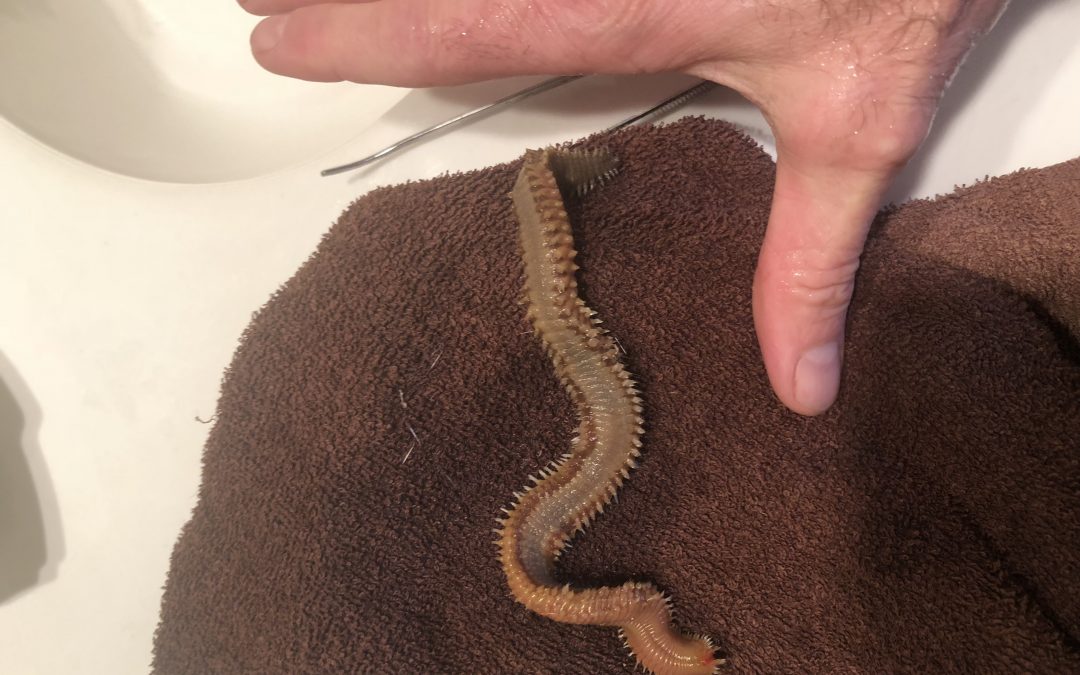Bristle worms are one of many creatures you will find seemingly spontaneously appearing in a maturing reef aquarium. Are they cause for alarm or not? Not initially but nearly any creature that multiplies out of control in any ecosystem poses problems for the balance of that ecosystem…ahem…humans.
This post isn’t intended to be a dissertation on the taxonomic classification of these creatures but an attempt at a more reader-friendly and actionable article for the average saltwater aquarium hobbyist…so calm down there Linnaeus.
Bristle worms are great detritivores. This means they consume detritus. In the event you haven’t heard the term “detritus” (Shame on you. Catch up on the industry lingo.), it is basically the beige colored junk that settles into slow flow areas and pockets in an aquarium. Things like fish poop, bacterial films, broken-down uneaten food are what detritus is made out of. Lots of creatures and bacteria consume this garbage, further breaking it down. You don’t want detritus sitting around in your system because it contains substances that foul your water and are a good source of food for bad bacteria and algae. You want creatures that eat up this junk to help you out. Bristle worms do this and you don’t even have to pay for them. They will just appear in your system as it matures.

EN GARDE!
Oh, by the way, DON’T GRAB THEM WITH YOUR BARE HANDS. Use a big tweezers or something similar. They are lined on the sides with tiny, hairlike needles with a mild irritant in them as a defensive protection measure. Honestly they don’t bother me as I have been putting my hands in aquariums since the mid 1990s but they can swell your hands up a little and be irritating if you aren’t used to them.
I can tell when a system has a problem processing a build up of detritus because bristle worm populations will usually explode. Not enough internal water flow inside your system, too much uneaten food, never stirring up a substrate clogged with detritus…These are situations that bristle worms will take advantage of. Though I started this article saying bristle worms are helpful, creatures that explode in population size, especially in a confined environment like an aquarium, usually end up causing problems. Ask birds what they think about outdoor cats. An out-of-control population of bristle worms will sometimes lead to starving bristle worms that munch on things they wouldn’t normally munch on. If you were truly starving, you’d fight a squirrel for acorns, I guarantee you that. What you want to do is keep a few critters that would eat bristle worms in order to control their population. You want to control them but not eleminate them.

YUCK!
Arrow crabs are great for this. They don’t generally like each other so don’t get more than one unless you have a giant aquarium.

Bring on the bristle worm invasion!
Banded coral shrimp are purported to eat them as well. I’ve seen arrow crabs eating them more often but the more the merrier as far as bristle worm predators go. Many reef safe wrasse and some Pseudochromis will also eat them when small. The bristle worms being small, that is.
Bristle worms are faster than you think and don’t generally come out much when the lights are on. They like to come out at night, from the rock structure, and scrounge around for food. There are manual ways to remove as well, such as placing some food items in a container with a small opening (so fish don’t fit in) when the lights are off and yanking out the jar when you find a lot of them in there. I wouldn’t worry much about the little ones but I like to remove the huge ones when I can. Don’t tear apart your reef trying to get one but if you can easily remove a rock where you saw a big one crawl into, you can take it to a sink and try to fish it out with a tweezers. Again, I wouldn’t make a big deal of it unless you are bored and need something to do. I have three kids so I never find myself in that situation.

This is just two of them. They eat more than bristle worms but are much cuter.
So enjoy your worms but keep an eye on them. Keep some bristle worm predators in place so they don’t multiply too much. Make sure you have good internal circulation of the water inside your aquarium and don’t overstock or overfeed. Pretty general but I don’t really need to drill down on any of that…unless you need me to. If you do, hit me up in the comment section and I’ll drill away!
Ben Johnson – Captive Aquatic Ecosystems – 713-385-1297 – ben@caecosystems.com – custom aquarium installation and scheduled maintenance in Houston, Texas and beyond.


Recent Comments